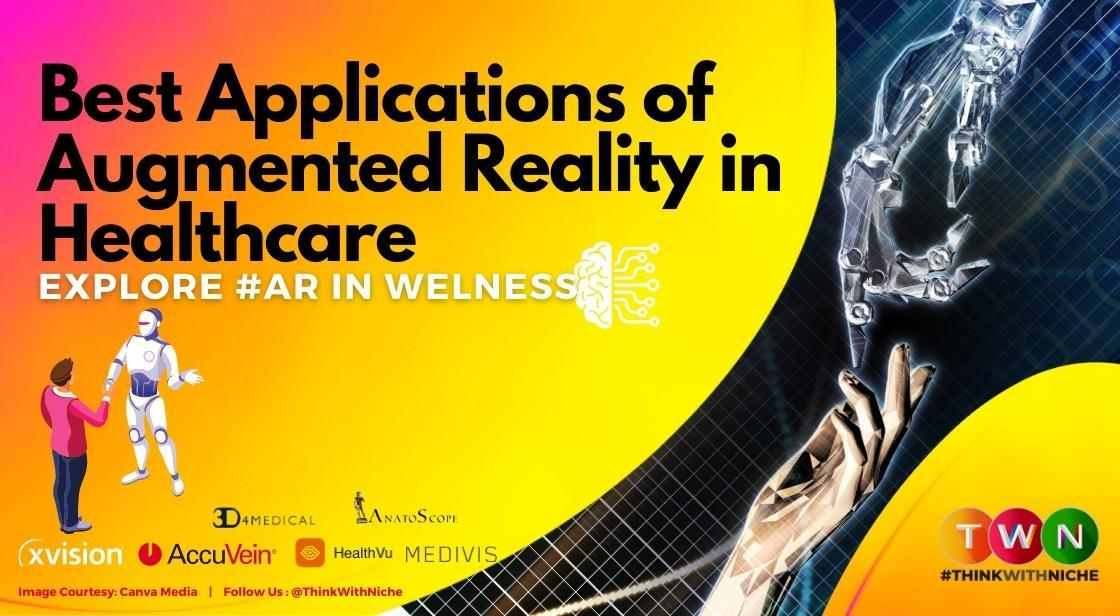Best Applications Of Augmented Reality In Healthcare
Up to 1,500,00 persons suffer a non-fatal injury each year as a result of medical errors, according to research on medical malpractice. AR aims to make it simpler for doctors to access patients instantly through visualization, assist first responders with treatment instructions, and directly diagnose patients' current conditions without the need for emergency medical services. AR is a technology used to reduce medical errors and enhance patient care and safety (EMS).
Augmented reality technology has an impact on medical education and training by enabling students to practice in real-time and model surgery. It improves communication among the patient's care team and provides medical professionals with information particular to that patient. Additionally, AR can aid in cost reduction by leveraging video telehealth features that enable real-time connection with distant medical professionals and let healthcare allocate resources wisely.
In fact, augmented reality (AR) is already profoundly transforming how businesses and organizations learn, interact, visualize, and evolve, and it is only now that it is becoming evident that it has the ability to fundamentally transform whole sectors.
According to Markets & Markets, the augmented reality (AR) market is expected to grow from $15.3 billion in 2020 to $77 billion by 2025, illustrating the significant influence that technology will play in transforming society in the future.
Moreover, healthcare is only one example of how AR is enhancing society.
As the market expands, several new advancements in the healthcare industry are appearing, assisting medical professionals to provide patients with treatment that is quicker, cleaner, smarter, and safer.
Here are some of the most amazing instances of how augmented reality is changing the healthcare sector.
In this blog article, we'll receive a quick summary of the Best Augmented Reality Applications in Healthcare.
Best Applications Of Augmented Reality In Healthcare
1. AccuVein
AccuVein AR provides intelligent vein visualization to help clinicians quickly, accurately, and painlessly locate relevant veins in patients.
AccuVein increases yearly savings by up to $350,000+, increases the likelihood that a first-time injection will be effective by 350%, and preserves patient happiness by improving vascular access.
2. XVison Augmedics
Augmedics XVision provides the first augmented reality surgical guiding system in the world. This tool allows surgeons to see a computer-generated image of the patient's anatomy from below the skin's surface, ensuring that every surgery is carried out exactly.
3. AnatoScope
For medical device companies looking to improve their individualized designs, Anatoscope offers software solutions to automatically transform imaging into full 3D digital twins of the patients, ready for motion and physical simulation, to aid in diagnoses, to virtually try treatments, and to automatically design the best braces and prosthetics. Its distinctive technique, developed over 20 years of research at CNRS and INRIA, converts biomechanical templates to bespoke visuals.
By working with dental, imaging, and orthopedic companies, it hopes to raise the standard for bespoke brace and prosthetics design.
4. HoloAnatomy
Thanks to Microsoft's cutting-edge augmented reality technology, medical students are learning about human anatomy in a novel and inventive way.
Instead of past versions of the topic where lectures on human anatomy were limited to passive, didactic teaching techniques, HoloAntomy now offers a fully interactive experience where students may contribute and learn in ways that were previously considered to be impossible.
5. Trajekt AR
The Virtual Replays that Trajekt generates from your Strava activity showcase your performance. If you've ever used Relive or a similar route visualizer, you'll enjoy synchronizing your actions with this app to track your progress. To show how you and your friends did along each foot of the course, an avatar replicates each stride or pedal stroke.
Understanding of augmented reality (AR)
Watch your avatar race on a 3D map that is projected into the ground using the camera on your phone. Longer sessions are possible with quick loading times. The rate of playback is adjustable. The camera angle and magnification level may also be changed.
6. Medivis
Medivis is another example of how AR is affecting robotic surgery in the future.
With Medevis, healthcare professionals may use AR and AI to achieve better patient outcomes, save expenses, and increase efficiency inside healthcare companies.




